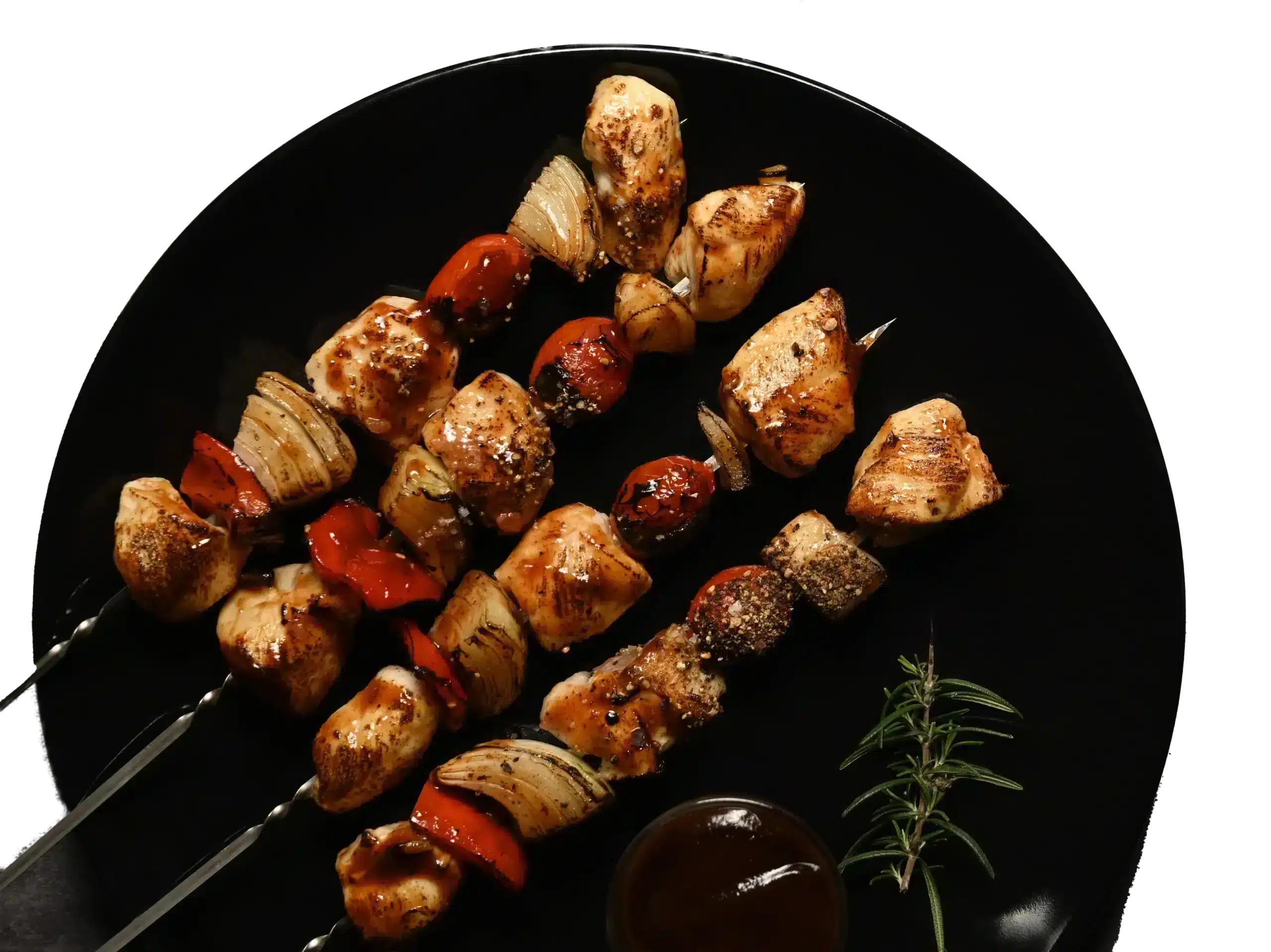
Welcome to this guide on kitchen safety. Your kitchen is the heart of your home, but it can also be a dangerous place if you’re not careful. From sharp knives to hot surfaces, there are many potential hazards that can cause accidents and injuries. Fortunately, with the right knowledge and precautions, you can prevent most accidents from happening. In this article, we’ll cover essential tips for accident prevention in the kitchen.
As you go about your daily routine in the kitchen, it’s important to be aware of the potential hazards that could cause harm. By understanding these hazards, you can take the necessary precautions to minimize the risk of accidents.
Sharp objects, such as knives and scissors, are common in the kitchen and can cause serious injuries if not handled properly. It’s essential to keep them out of reach of children and to store them safely when not in use. Always use cutting boards and hold the food with a claw grip to reduce the risk of accidentally cutting yourself.
Hot surfaces, including stovetops and ovens, are also a potential danger in the kitchen. Always use oven mitts or potholders when handling hot pots and pans, and make sure to turn pot handles inward to prevent accidental spills. Keep a close eye on simmering liquids, and place a lid on hot grease to prevent splatters.
Slippery floors can lead to slips, trips, and falls in the kitchen. To prevent this, always clean up spills immediately and keep the floor dry. You can also use non-slip mats in high-traffic areas to reduce the risk of slipping.
Finally, keep in mind the danger of chemical hazards. Cleaners should be stored out of reach of children and far from food preparation areas. Never mix cleaning chemicals and keep the area well ventilated when using them.
By understanding these hazards and taking appropriate safety measures, you can ensure a safe and secure kitchen environment.
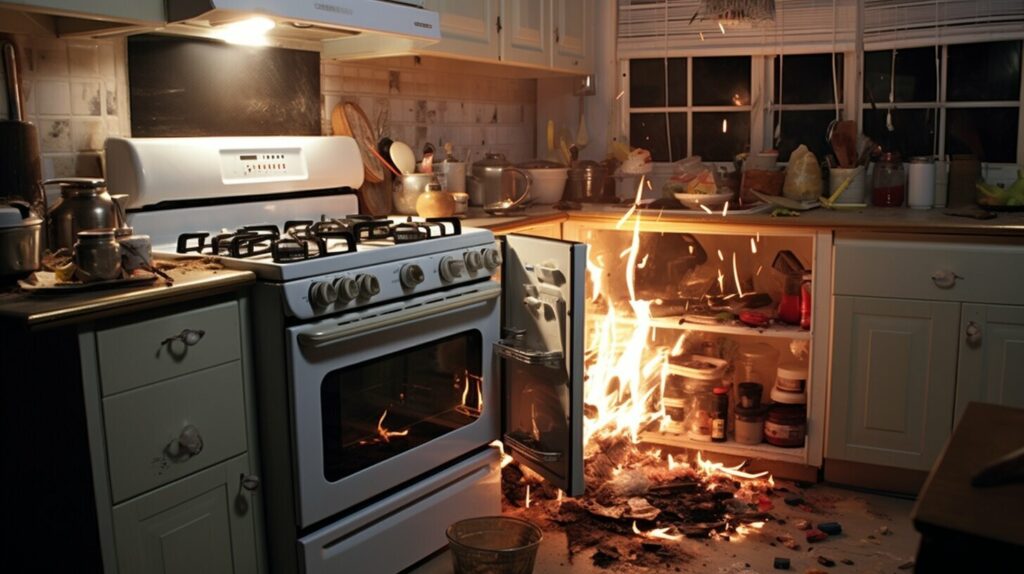
Keeping your kitchen organized is crucial for maintaining a safe environment and preventing accidents. Here are some tips to help you organize your kitchen:
By following these guidelines, you can create a safer kitchen environment that minimizes the risk of accidents and promotes healthier cooking habits. Remember, an organized kitchen is a safe kitchen!
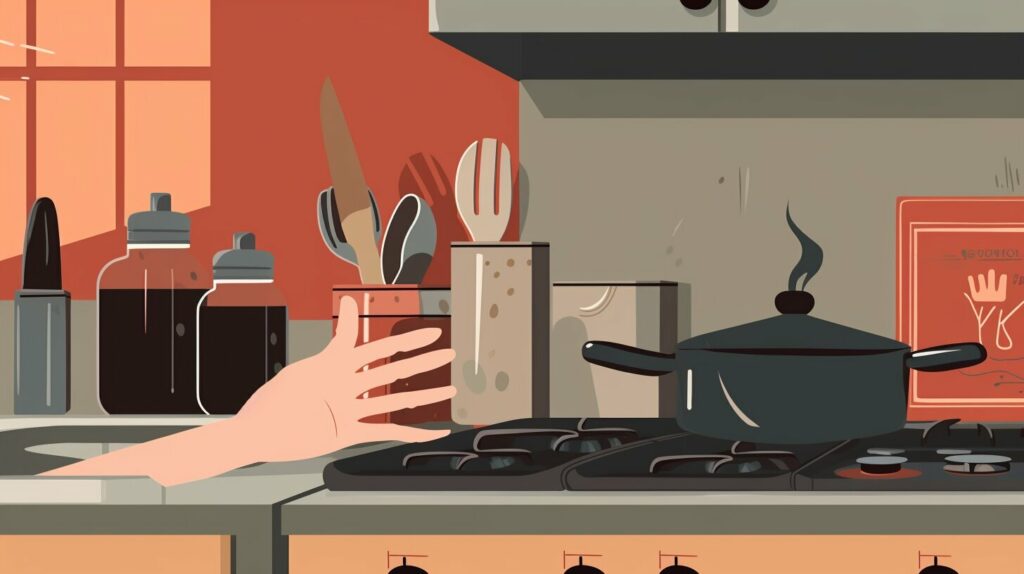
Knives and other sharp utensils are essential tools in any kitchen, but they can also be dangerous if not handled properly. By following these tips, you can ensure that you are using these tools safely and preventing accidents.
When storing knives and other sharp utensils, make sure they are in a safe place where they cannot accidentally fall or be knocked over. A knife block or magnetic strip on the wall are both good options.
By following these best practices for handling knives and utensils, you can ensure that you are using them safely and preventing accidents in your kitchen.

When cooking in the kitchen, it’s important to prioritize safety to prevent accidents. Follow these essential tips for safe cooking practices:
By following these safe cooking practices, you can help prevent accidents in the kitchen and ensure a safe cooking environment for you and your family.

“Safety is a cheap and effective insurance policy.” – Unknown
Hot liquids and surfaces can cause serious burns and scalds in the kitchen. It’s important to take necessary precautions to prevent these accidents from happening.
| Tips for preventing burns and scalds: |
|---|
| Always use oven mitts or potholders when handling hot dishes or using the oven. |
| When cooking with hot liquids, use pots with secure lids to prevent spills and keep handles turned inward to avoid accidental spills. |
| When handling hot surfaces, such as stove tops or baking sheets, use long-handled utensils and keep a safe distance from the heat source. |
| Be cautious when opening microwaved items as steam can cause burns. Allow the item to cool for a few seconds before handling. |
Following these safety measures can help prevent burns and scalds in the kitchen. Stay alert and keep safety top of mind to stay protected while cooking and handling hot items.
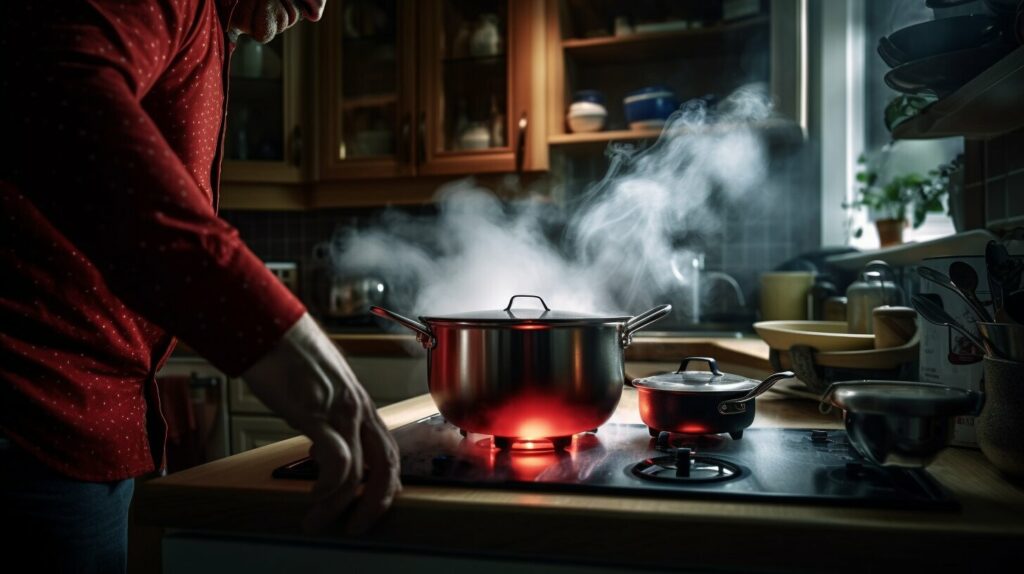
In a busy kitchen, slips, trips, and falls are common accidents that can result in serious injuries. To prevent these accidents, it’s essential to maintain a safe and clean kitchen environment at all times.
One of the easiest ways to prevent slips and falls is to keep the floors dry and free of debris. Always clean up spills and splatters immediately and use a non-slip mat in areas that tend to get wet, such as near the sink or stove.
Good housekeeping habits are also essential for preventing tripping hazards. Keep the kitchen clean and organized, and avoid leaving items on the floor that could cause someone to trip, such as electrical cords or pot handles.
Finally, it’s important to wear proper footwear in the kitchen. Avoid wearing shoes with slippery soles or high heels, which can make it difficult to maintain your balance on wet or uneven surfaces.
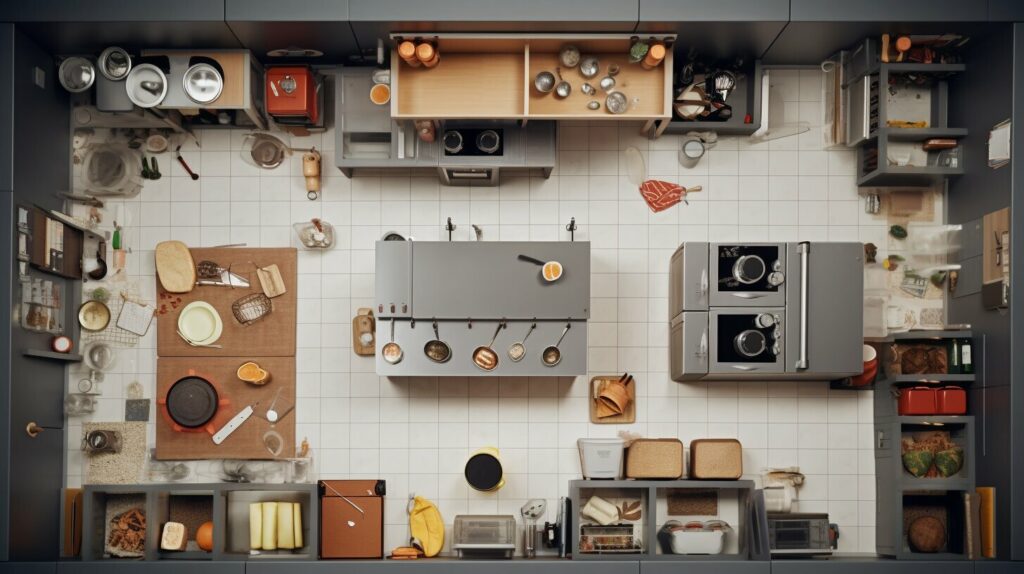
Image source: seowriting.ai
Electrical appliances in the kitchen make our lives easier, but they can also pose safety hazards if not handled properly.
To prevent accidents, always plug appliances directly into outlets and avoid using extension cords or adapters. Also, keep cords away from heat sources, and never use wet hands when handling electrical appliances.
| Best Practices | Dangers to Avoid |
|---|---|
|
|
Always practice caution and good judgment when using electrical appliances in the kitchen. By doing so, you can minimize the risk of accidents and enjoy the convenience they offer.

If you have young children in your home, it’s crucial to take extra precautions when it comes to kitchen safety. Here are some tips for childproofing your kitchen:
Remember, even with these precautions in place, never leave young children unattended in the kitchen. Keep a close eye on them while they’re in the area and always prioritize safety.

Congratulations! You’ve successfully completed Kitchen Safety 101 and have learned essential tips for accident prevention in the kitchen. Remember, safety should always be your top priority in the kitchen to ensure a secure environment for you and your loved ones.
By understanding kitchen hazards, organizing your kitchen for safety, properly handling knives and utensils, practicing safe cooking habits, preventing burns and scalds, avoiding slips, trips, and falls, handling electrical appliances safely, and childproofing your kitchen, you can significantly reduce the risk of accidents in the kitchen.
We hope you found this article informative and helpful. Remember to always stay alert and use caution in the kitchen. Stay safe!

